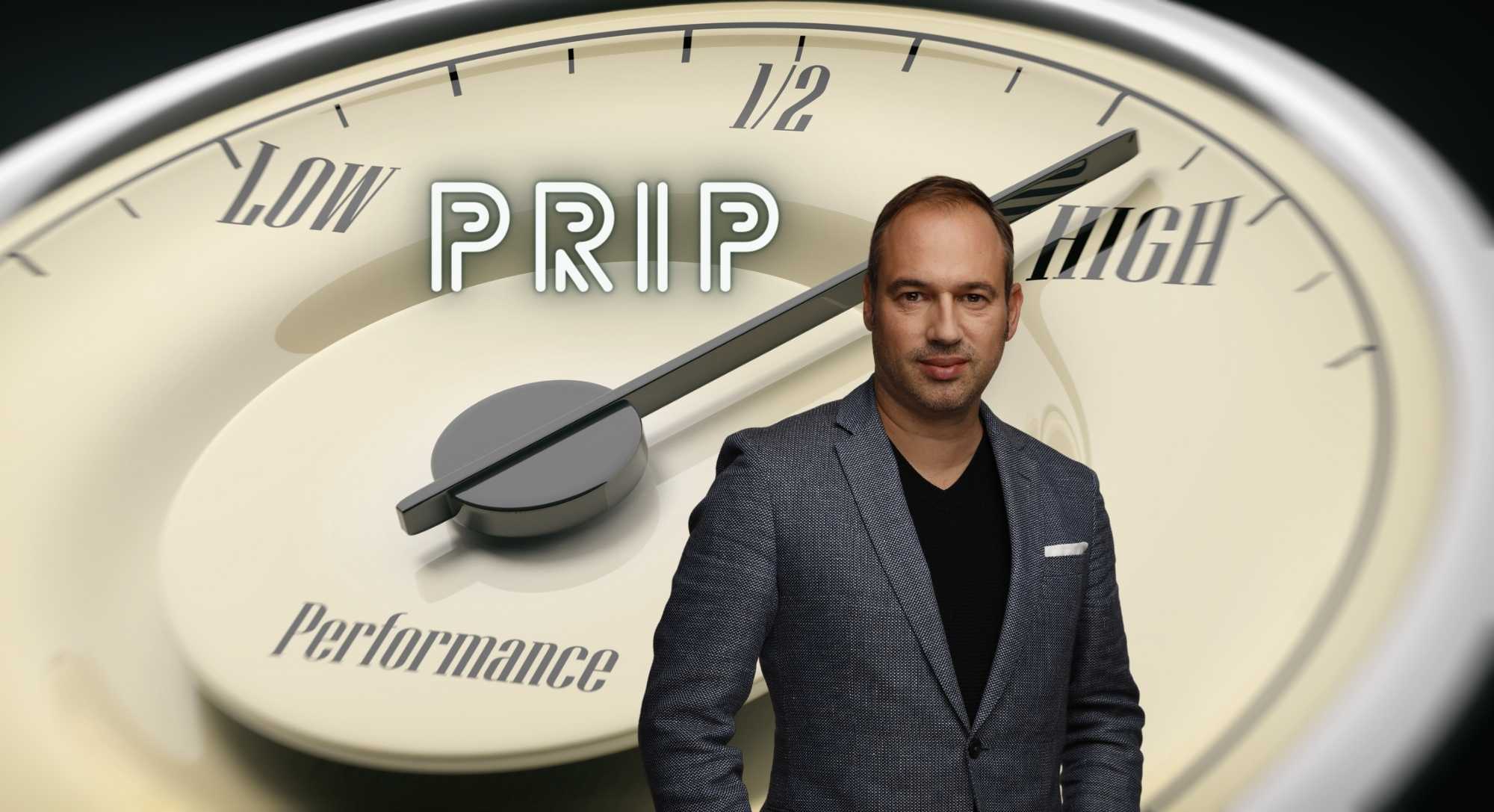The media industry is in a state of constant evolution. With advertisers demanding greater accountability and value from their media agency partnerships, PRIP has emerged as a beacon of hope. The quest for maximising value and minimising wastage has led to the evolution of remuneration models, with the Performance Related Incentive Program (PRIP) emerging as a pivotal development.
In this article, we will explore the potential of PRIP in fostering mutually beneficial partnerships between advertisers and media agencies. We will delve into its conceptual framework, benefits, real-world applications, and its future trajectory in the advertising ecosystem. Through insights gained from extensive experience and illustrative case studies, we will shed light on how PRIP is transforming media agency partnerships and driving advertising efficiency to new heights.
What is a PRIP?
PRIP, or Performance Related Incentive Program, is a modern remuneration model designed to align the interests of advertisers with their media agencies. Unlike traditional commission or fixed-fee structures, PRIP ties an agency's compensation to specific, measurable outcomes or results. In essence, it's a reward system where agencies are incentivised based on their performance.
Imagine setting up a football match where players are paid not just for participation but for every goal they score. PRIP operates on a similar principle but in the advertising industry. Media agencies are rewarded when they meet or exceed predefined targets (KPIs) and face financial penalties for failing to meet their commitments or promises made during the media agency pitch.
Benefits of Using a PRIP?
The beauty of PRIP lies in its flexibility. Advertisers and agencies collaboratively set the performance metrics, ensuring that both parties have a clear understanding of expectations. This mutual agreement fosters a sense of partnership, where both the advertiser and the agency work towards a shared goal.
Moreover, PRIP introduces an element of accountability into the agency-client relationship. With clear performance metrics in place, agencies are motivated to deliver their best, knowing that their remuneration is directly tied to their success. On the flip side, advertisers can be assured that they're getting value for their investment, as they pay for tangible results rather than just effort.
In a nutshell, PRIP is a win-win model, championing transparency, accountability, and performance in the media agency landscape.
Not All PRIPs Are Equal
The adaptability of a PRIP is at the core of its effectiveness. It serves as a framework that can be tailored to meet the unique needs and objectives of each advertiser-agency partnership. This flexibility, while a significant advantage, can also present challenges if not carefully designed and defined. Without clear parameters, a PRIP can become too lenient, offering rewards without substantial performance, or too stringent, setting unrealistic expectations that may demotivate rather than inspire.
I've had the privilege of consulting for a diverse range of brands, from big global brands to new and smaller local brands. Through these experiences, I've observed a spectrum of PRIP models:
The Generous PRIP
- Some brands, eager to foster a positive relationship with their agencies, set easily achievable targets. While this ensures frequent rewards for the agency, it might not drive them to push boundaries or innovate, leading to potential media wastage.
The High-Bar PRIP
- At the other end of the spectrum are brands that set exceedingly ambitious targets. While aiming high can drive agencies to excel, unrealistic expectations can lead to dissatisfaction, strained relationships, and even the risk of quality compromise in the pursuit of lofty goals.
The Balanced PRIP
- This is the gold standard. Brands that strike a balance between ambition and realism in their PRIP design tend to reap the most benefits. Clear, achievable yet challenging metrics ensure that agencies are motivated to deliver their best, fostering a partnership built on mutual growth and trust.
The key takeaway? Design matters. A well-structured PRIP, tailored to the specific needs and objectives of the brand, can be a game-changer. Conversely, a poorly designed PRIP can lead to inefficiencies, misaligned goals, and missed opportunities.
As advertisers navigate the PRIP landscape, it's imperative to remember that while the overarching concept remains consistent, its execution can vary. The challenge lies in crafting a PRIP that aligns with brand values, objectives, and the nuances of the agency partnership, ensuring that both parties are set up for success.
Structuring an Effective PRIP
An effective PRIP usually includes the following key elements, which can be weighted differently depending on your specific requirements:
Media Pricing
- Ensuring that the costs associated with media placements are competitive and provide value for money.
Media Quality
- Ensuring that media placements maintain a high level of quality to effectively meet the minimum threshold without compromising quality to achieve competitive pricing.
Cash AVBs (Agency Volume Bonuses)
- Addressing the rebates or discounts that agencies receive from media vendors to ensure transparency and that these benefits are passed on to the advertiser.
Digital Media Technical Costs
- Scrutinising the costs associated with digital media, including ad tech fees, data charges, and other related expenses.
Media Agency Service Quality
- Assessing the overall quality of service provided by the media agency, from planning and execution to reporting and communication.
Business KPIs
- Aligning the PRIP with broader business objectives, ensuring that media performance contributes to overarching company goals.
To truly harness the potential of the PRIP model, I recommend the following steps:
1. Advertiser-Designed PRIP: The PRIP should be crafted by the advertiser, not the media agency. This ensures that the KPIs being tracked are those that genuinely matter to the brand, reflecting its unique objectives and priorities.
2. Incorporate Both Bonus and Malus Mechanisms: A well-structured PRIP should reward agencies for exceeding expectations (Bonus) and penalise them for subpar performance or failing to honour commitments (Malus). This dual mechanism ensures a balanced approach, motivating agencies to consistently deliver their best.
3. Significant Remuneration Component: For a PRIP to be truly impactful, it should represent a substantial portion of the media agency's remuneration package. If the incentive is too minuscule, it won't sufficiently motivate the agency or put their profit margins at risk.
4. Detailed Contractual Inclusion: Every facet of the PRIP, from KPI definitions and bonus/malus calculation methodologies to agency commitments and specific objectives, should be explicitly detailed in the media agency contract. Clarity and comprehensiveness in the contract ensure that both parties have a clear understanding of expectations, responsibilities, and potential rewards or penalties.
The Importance of Ongoing PRIP Management
Implementing a robust and effective Performance Related Incentive Program (PRIP) is a commendable stride towards aligning media agency performance with advertiser objectives. However, it's crucial to understand that the journey doesn't end with its establishment. In fact, that's just the beginning.
Having a PRIP in place is akin to setting a sophisticated machinery in motion. While it's designed for efficiency and precision, without regular monitoring and maintenance, its performance can degrade over time. Similarly, a PRIP, no matter how well-structured, can quickly lose its efficacy if not managed and monitored continuously.
Why Ongoing PRIP Management is Crucial:
- Timely Course Correction: Regular monitoring allows for the early detection of any deviations from set objectives. This proactive approach ensures that corrective measures can be taken well in advance, preventing minor issues from snowballing into major challenges.
- Maintaining Agency Alignment: Continuous engagement with the media agency ensures that both parties remain aligned with the evolving objectives and market dynamics. It fosters a collaborative environment where feedback is shared, and strategies are refined in real-time.
- Preventing Relationship Strain: A PRIP inherently introduces an element of accountability into the agency-advertiser relationship. Without ongoing management, there's a risk of misunderstandings or perceived unfairness, which can strain the partnership. Regular check-ins and transparent communication can mitigate such risks.
- Optimising Return on Investment: Continuous PRIP management ensures that the advertiser's investment is always directed towards achieving the best possible outcomes. It prevents stagnation and promotes a culture of continuous improvement.
- Ensuring Relevance: Market dynamics, consumer behaviour, and business objectives can change. Regular PRIP reviews ensure that the program remains relevant and adapts to these changes, ensuring sustained effectiveness.
It's tempting to view PRIP management as a periodic exercise, perhaps something to be revisited annually. However, such an approach can be detrimental. By the time a year has passed, the landscape may have shifted dramatically, making it challenging, if not impossible, to implement effective corrective measures. The key is to view PRIP management as an ongoing dialogue, a continuous process of engagement, review, and refinement.
Conclusion
In conclusion, the Performance Related Incentive Program (PRIP) emerges as a beacon of alignment, accountability, and mutual growth for advertisers and media agencies alike.
However, as we've explored, merely implementing a PRIP isn't the endgame. Its true potential is unlocked through meticulous design, continuous management, and a commitment to mutual success. A well-structured and diligently managed PRIP can be the cornerstone of a symbiotic relationship, driving both parties towards unparalleled achievements.
Yet, the journey to crafting the perfect PRIP, tailored to your unique objectives and challenges, can seem daunting. That's where expert guidance can make all the difference.
Ready to embark on your PRIP journey? Let's discuss how we can assist you in designing a tailor-made PRIP that aligns with your goals, challenges, and market dynamics. Our extensive experience and global perspective position us perfectly to guide you through every step of the process, ensuring a PRIP that drives results and fosters a thriving agency partnership.
Schedule a call with us today and let's co-create a PRIP that propels your brand to new heights.
Media Auditing Guide: Click Here
Media Agency Pitch Management Guide: Click Here
--------------------------------------------------------------------------------
Author Expertise and Experience:
Philippe Dominois is co-founder and CEO of Abintus Consulting, and Head Coach at the Abintus Academy. He has over 25 years of international media experience, having worked on the media agency side, client side, and media auditing side throughout his career. Philippe has authored hundreds of articles over the years that focus on media management best practices.



